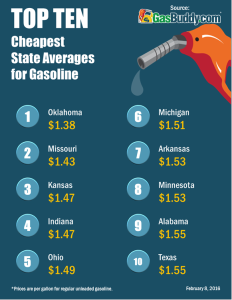Morning Summary
U.S. stocks are down slightly this morning as macro traders digest headlines from over the weekend that China has cuts it’s economic growth target. The Chinese government however emphatically denies any rumors of a “hard-landing”. Crude continues to gain traction and is now trading at multi-month highs. Emerging market equities just chalked up their biggest weekly gains since 2011. It’s also worth noting that both gold and iron ore, though down slightly this morning, are up nearly +20% on the year. All of which has some inside the trade arguing that the commodity markets have bottomed. Bottom-line, I suspect as oil stabilizes investors are going to continue to feel more at ease with adding “risk”. There seems to be more talk about the overall economic landscape becoming much more highly “fragmented” rather than negative across the board. In other words some pockets or areas of the economy are seeing sharp declines and have clearly moved into recessionary territory, while other areas remain strong and robust. Many analyst believe this is why the markets have become extremely difficult to forecast. It seems like whatever direction the headlines and lights on the stage decide to shine can produce wildly different results. One thing for certain, we are finally seeing more sizable cuts in U.S. oil production as rig counts drop below 400. Keep in mind, U.S. crude production had jumped from just 5.4 million barrels a day back in early-2010 to a whopping 9.7 million barrels per day this past spring. We are also seeing more headlines about Saudi Arabia looking to borrow $10 billion dollars and talk their government may be starting to feel the pain of cheap oil. Russia is also talking more openly about possible production cuts. Here at home this week economic data will be very light, today’s only release being the Labor Market Conditions Index, which isn’t heavily watched by investors but seems to be something the Federal Reserve officials monitor. Keep in mind the jobs report this past Friday was extremely strong, showing employers added +242,000 jobs in February, well above market consensus. The government also revised upward its estimates for job gains in December and January by a total of +30,000. The negatives in the report were a -0.1% decline in hourly wages and a slight reduction in weekly hours worked. I suspect the main event this week will be the European Central Bank’s latest policy decision, which will be announced on Thursday morning. The trade is expecting the ECB to move rates further into negative territory. Keep in mind that the whole “negative rate experiment” is eyed with a high degree of anxiety as investors and economists alike aren’t sure what the ultimate consequences might be. While central bank stimulus has historically been viewed by Wall Street as a positive, the deeper move into negative territory may not illicit that traditional response. It doesn’t help that the ECB’s stimulus efforts have so far failed to prop up their waning economy, as just last week data showed the the EU block has slid back into “deflation.” Analysts are also expecting the ECB to increase its bond buying by […]

